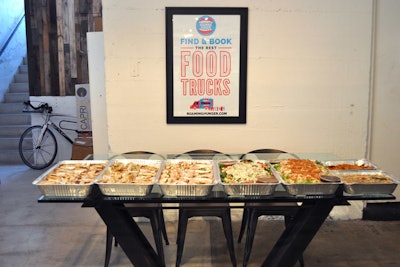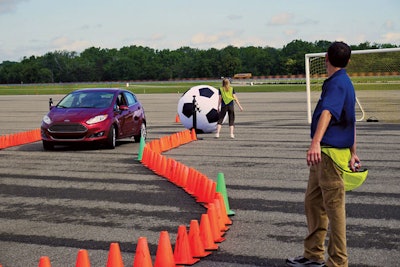
Conference participants got behind the wheel of Ford’s newest vehicles at the company’s test track near its Dearborn, Michigan, headquarters.

The meeting was designed to engage people who learn better visually.
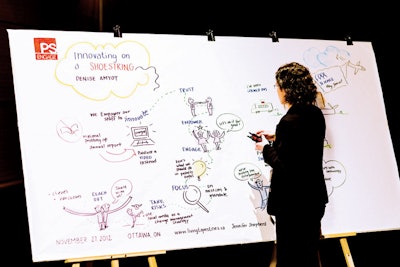
During each presentation, an artist on stage interpreted the content using sketches and diagrams.
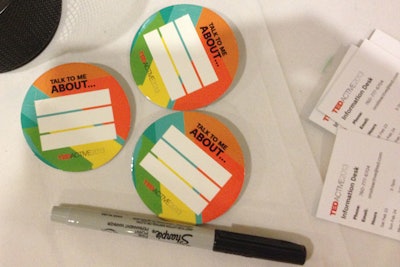

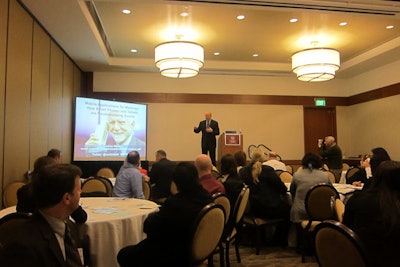
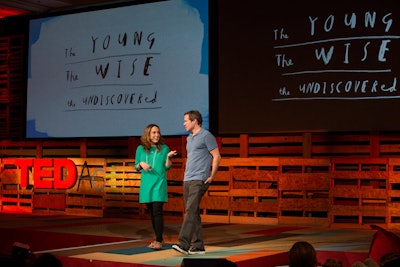
The main stage at TEDActive used wooden pallets to create a simple backdrop.
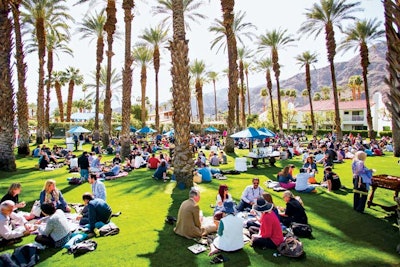
An outdoor lunch offered group picnic baskets, encouraging attendees to meet—and talk to—new people.
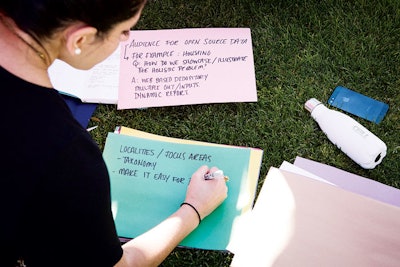
Through the course of the multiday event, attendees brainstormed (and advanced) big ideas through TEDActive projects.
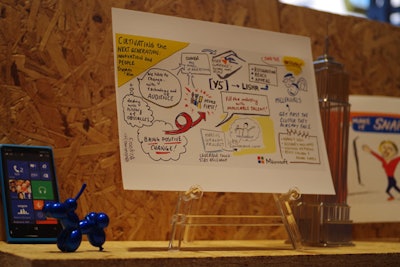
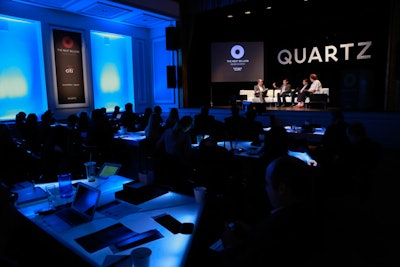

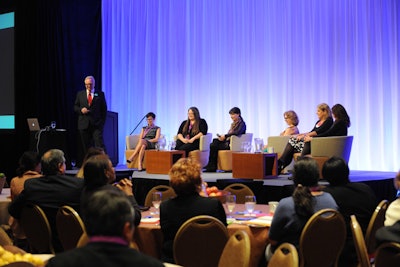
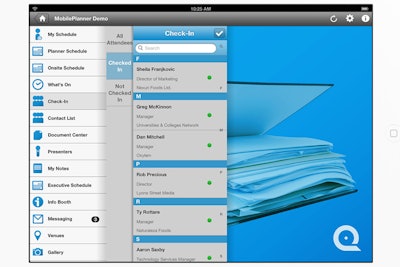
QuickMobile, a maker of mobile apps for meetings, conferences, and trade shows, created a product intended to help planners get their work done more efficiently. MobilePlanner debuted in mid-October and allows planners to manage documents, schedules, vendor contracts, exhibitors, attendees, speakers, and sponsors in one system that can be accessed on any device. Planners can manage multiple events simultaneously within the app and can allocate full or partial access to other team members. MobilePlanner can track progress and communication among everyone working on an event, and the organizers can also send push notifications for quick updates. At an event, the app indicates who has checked in and tracks details such has flight information, transportation, accommodations, and dietary needs.
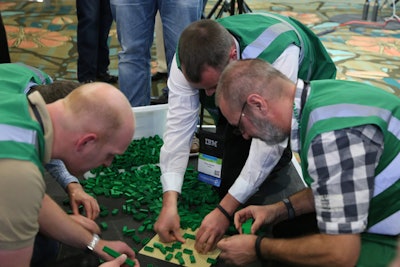
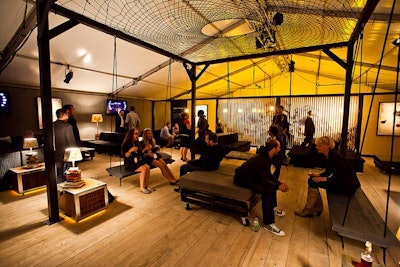
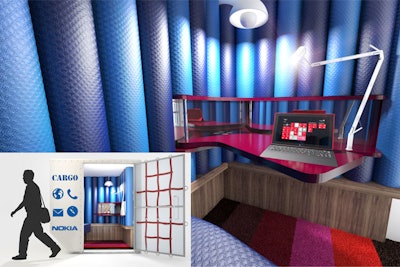
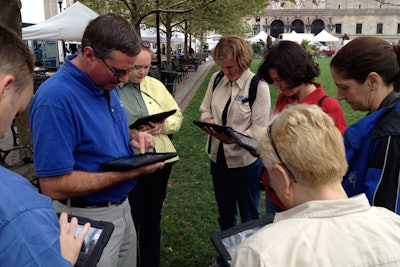
SmartHunts are iPad-based activities offered by Best TeamBuilding. Teams perform challenges, solve clues, and answer trivia questions, which can all be customized for the group. Participants also capture video and photos throughout the activities that can be shown at the conclusion of the event and shared through social media. SmartHunts feature two-way messaging so teams are connected with the hunt coordinator, who can track players using GPS and download photos and scoring. Themes include Amazing Chase, Mission Possible, Da Vinci Code, and an Event Kick-Off SmartHunt for conferences. Each hunt takes about three hours.
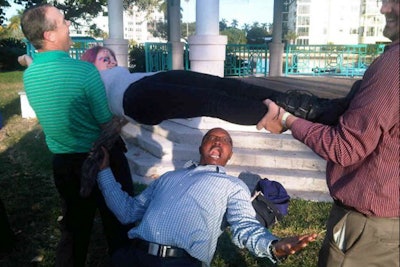
TeamBonding offers five “Smartphone Scaventures,” in which players use the company’s mobile app to search for items, complete tasks, and snap photos. Teams earn points based on activities completed and the quality of photos. Hosts can create a mission list from a bank of more than 100 options—such as asking participants to play “human limbo”—or they can design their own activities. Teams can compete against one another from multiple locations, whether in different cities or different countries. Each hunt takes about three hours to complete.
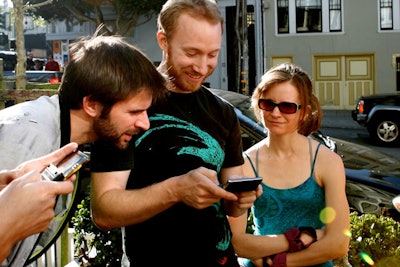
Go Game uses smartphones to guide players through a series of challenges. Teams of as many as 10 players are sent on a course to solve puzzles and complete tasks within a game zone, which could be a few city blocks or a convention center. Players complete missions by submitting digital photos and text answers through the phones. Examples include a National Mall game in Washington that asks players to locate specific buildings and answer questions about memorials. Go Game also provides costumed actors that interact with participants throughout the hunt. The game ends with a presentation of the photos and videos, which the host also receives on a USB drive.
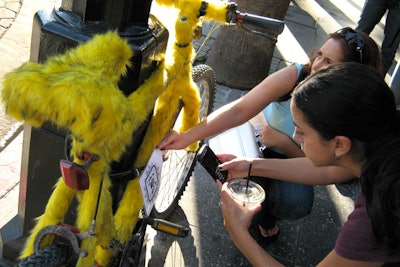
Wise Guys Events offers “Clockwise,” a cell phone scavenger hunt played with QR codes. Teams of as many as 10 players race against the clock to discover and decode 12 QR codes hidden within the game zone, usually a few city blocks. The codes may be located on a bike parked on a city street or on matchbooks players receive after giving a password to a bartender. When players scan the QR code, they get a password worth points at the end of the game and also instructions on how to complete an optional challenge for bonus points. Each hunt takes about four hours.
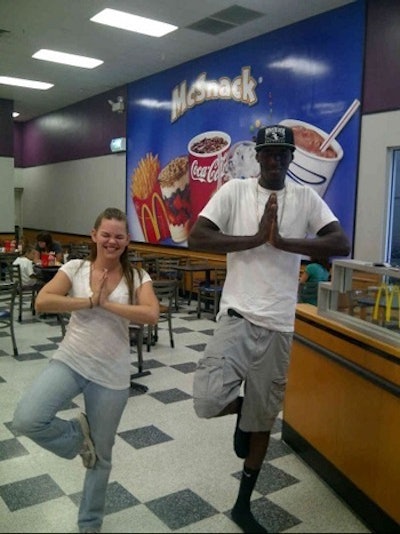
GooseChase is a D.I.Y. scavenger hunt platform. Hosts can choose from options in the “mission bank” or create one from scratch. Each mission has a set point value and can have images and links attached to it. Participants submit photos through the app as proof of completing each mission, which could include convincing a stranger to demonstrate a favorite yoga pose. Organizers can monitor the activity through the “Hunt HQ” on the GooseChase Web site and award points based on the submitted photos.
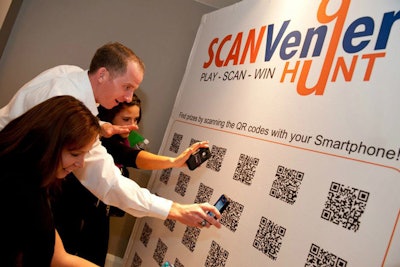
SCANVenger hunts are played using QR codes that can be placed throughout a venue, in an exhibit hall, or among a few city blocks. Players scan the codes and answer questions to earn points. Questions can be customized, for example, to quiz players about content learned at the event. Participants can also view the leaderboard on their devices, adding to the competition. SCANVenger also offers an interactive game wall—an 8- by 10-foot display of 30 QR codes—for hosts that want to offer a game without a physical hunt.
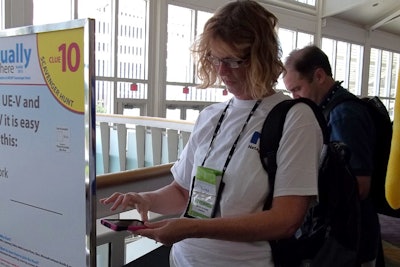
Wildly Different offers a hunt known as “Recess Anyone?” as well as custom hunts based on a client’s theme. Signs with riddles are placed throughout the hunt area. Teams or individuals use their smartphones to scan a QR code on the signs that leads them to a Web site with additional clues to answer the question. Hosts can determine how to set up the hunt: as a break between education sessions, a networking tool during a reception to encourage interaction, or as a way to get people moving around a trade show by placing clues in exhibitors’ booths.
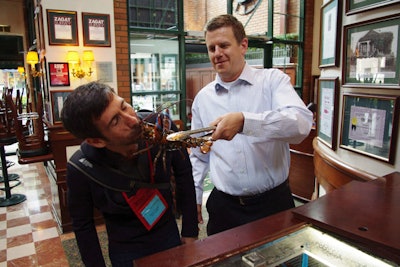
American Outback’s “Wild Goose Chase” scavenger hunt sends players on missions that vary from wacky—like kissing a lobster—to customized to match the event’s theme, location, or objectives. Teams access the missions using the company’s app, and the list can be completed in any order. The hunt can be played in a few hours or over several days during a conference. Players can view a leaderboard in the app to increase competition.
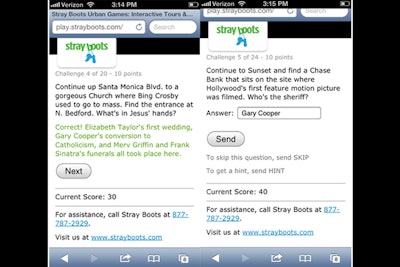
Stray Boots offers trivia-based walking tours of popular meeting destinations around the country, including Los Angeles, Chicago, New York, Miami, and Las Vegas. Players use their cell phones to complete challenges, solve riddles, and take photos, and they earn points along the way. Each activity includes interesting facts about the destination. Tours can be played via the Stray Boots app, text message, or on a mobile browser. For multiple teams, the game can be arranged so teams experience the same tour but take different routes.
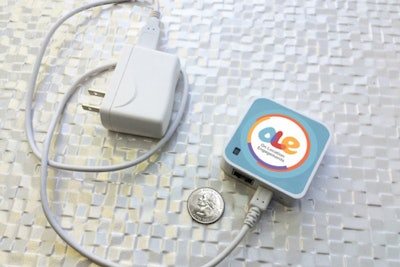
On Location Engagements is a location-based content delivery system for events. The company provides small beacons that use low-energy Bluetooth and Wi-Fi to communicate with attendees’ smartphones, both iOS and Android. Planners upload their floor plans into an online system and designate where they will place the beacons. Then they assign content such as maps, product information, videos, surveys, and sponsor materials to each beacon. Attendees either download the system's app, or it can be embedded into the event’s existing app. When attendees are within a designated range of the beacon—which can be anywhere from 5 to 30 feet—the content automatically appears on their devices. After the event, planners receive analytics such interactions per beacon, length of stay at each beacon, and traffic patterns at the venue.
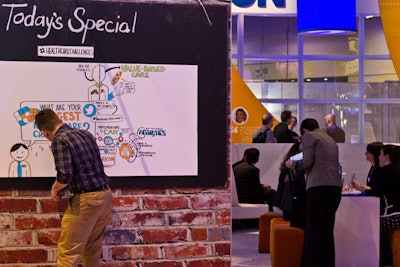
At the McKesson booth, a graphic artist from Ink Factory created a new piece of art each day around a specific health care topic based on Twitter and in-person comments. The company recorded a time-lapse video of the artist at work, which it then shared on its social networks.

Based in Dallas, Food Tours of America offers two customizable options for private groups: a two-and-a-half-hour walking tour, which costs $65 per person and includes three stops at sit-down restaurants plus a made-from-scratch dessert, or a three-and-half-hour walking tour of the city’s Uptown neighborhood, which costs $85 per person. In addition to seated tastings of local grub such as barbecue brisket nachos, chicken shawarma, fried pickles, and chimichangas, the second option also includes a visit to a local art gallery and a souvenir tour photo. Alcohol pairings and wine tastings can be added on for an additional fee. There is a maximum of 18 people per tour guide, but larger groups can book multiple guides.
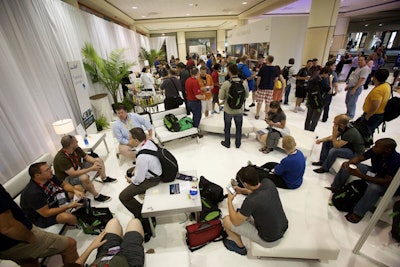
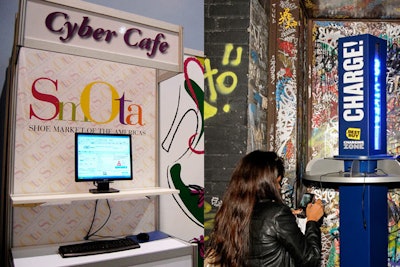

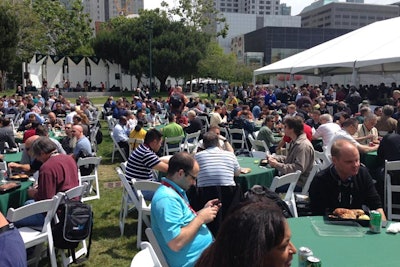
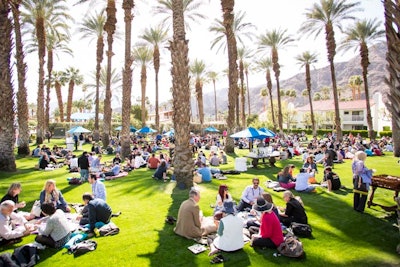
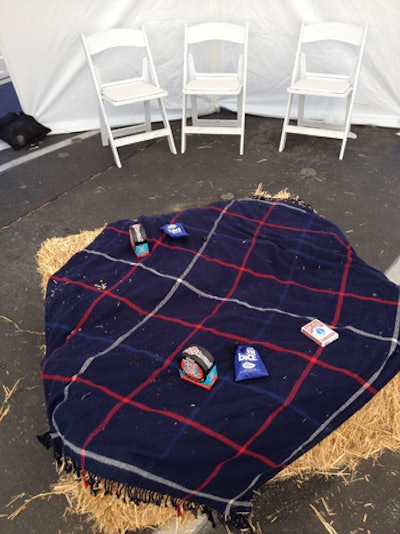
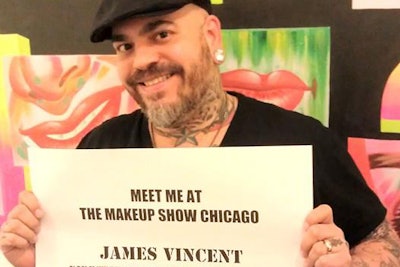
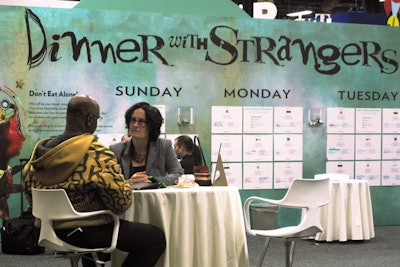
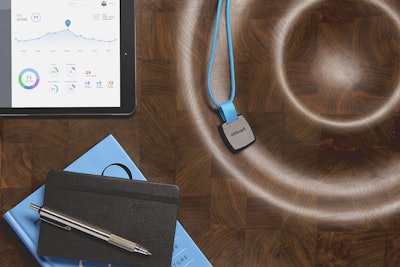
Loopd is a system that uses Bluetooth low-energy beacons to provide a variety of location-tracking tools for planners and attendees. Beacons placed around the event communicate with chips the attendees wear on a lanyard. As guests visit exhibitor booths, attend education sessions, and meet other attendees, the system tracks those movements and saves the information. At any time, guests can log into the Loopd app to see a history of those interactions, as well as receive marketing materials from exhibitors they visited. Booth staff also receive traffic information and can follow up with attendees. For networking, users can tap their badges together to share their contact information; otherwise the system will automatically collect data when two people are standing near each other for a predetermined amount of time. Planners receive real-time information about traffic flow and also data regarding retention, engagement, dwell time, and amount of connections made for attendees and exhibitors.
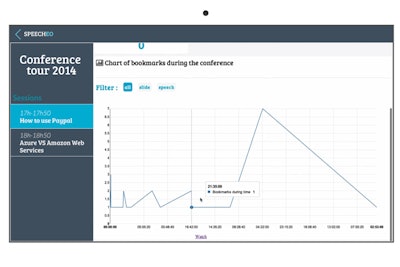
Speecheo is a new online tool for presentations designed to make it easy for audience members to take notes and also reveal to speakers and planners the most popular parts of their presentations. Attendees can view presentation slides and materials on their mobile devices and take notes alongside them. They can also capture audio and create bookmarks, so after the presentation they can review specific parts and share them on social media. Speakers and planners receive detailed analytics regarding which parts of the presentation were the most captured and shared. The system is currently in beta testing. The company expects to launch the public version in January.
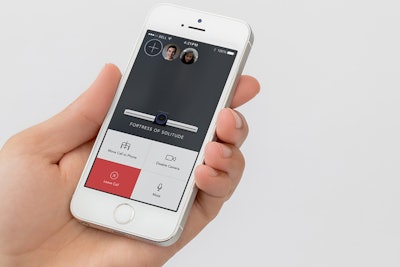
Highfive is new video conferencing system from two former Google engineers. For $799, users get a sleek device that can sit on top of a television or mount to a wall and includes a video camera, microphone array, and HDMI and Ethernet connections to connect to the Highfive online system. Users initiate a video call through the system’s app or browser and send the URL to as many as 10 other participants. Using Bluetooth low energy, the system recognizes if participants are in a room with a Highfive device and then, by swiping across their smartphone screen, the video transfers to the television in the room—without cables. The system also automatically displays video of the person talking.
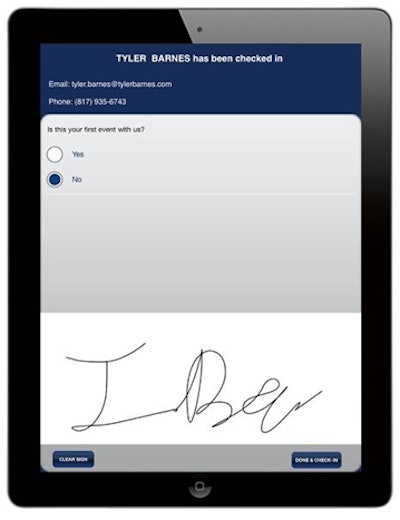
Event technology company Certain Inc. has added a digital signature option to its Check In Easy mobile app. The new Sign and Go feature is suited for events that need to collect signatures for attendance verification, compliance requirements, or gift pickup. The digital signatures can be exported as an alphabetized Excel file that includes a time stamp. Check In Easy is available for iOS and Android and is integrated with other Certain Inc. products.
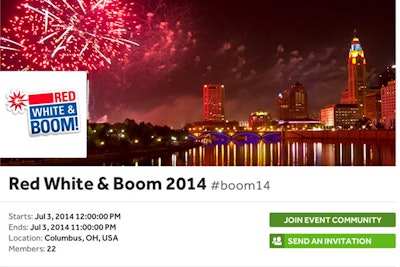
SmartCrowdz allows planners to set up an event website in minutes using its template-based system. The websites can include event schedules, maps, social media, registration, photos, digital payments, sponsorships, and more. There’s also a task management system that planners can use to track their to-do lists and manage event staff and volunteers. In October SmartCrowdz announced the launch of its event directory, a searchable database that has listings for events in each of the top 200 metropolitan areas in the United States with links to the event websites. SmartCrowdz places ads on event websites and then shares 25 percent of the revenue with planners once they have participated in one of the company’s training webinars.
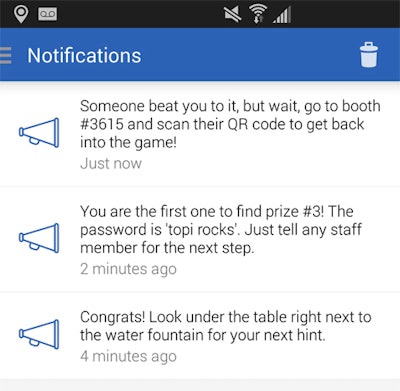
Topi is now integrating attendee tracking into its app through its new Beaconnected service. By communicating with Bluetooth low-energy beacons placed around an event, planners can use the app to track attendee movement and dwell time. They can also configure the app to trigger actions based on guest location, for example sending scavenger hunt clues as guests arrive at precise locations, sending speaker notes immediately after a presentation, or sending a survey as guests exit the venue.
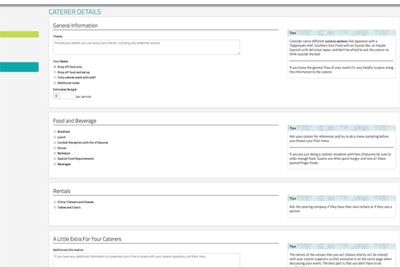
Eventsage is a new tool that helps planners find venues and vendors and then manages communication with the suppliers throughout the planning process. Users select the categories of vendors they need, such as caterers, florists, or audiovisual providers. The system prompts them to enter details, and then it generates a list of recommended suppliers. Planners choose their top three in each category and then the system sends requests to vendors for information and availability. Through what is called the “Sage Board,” planners can manage communication with all of their vendors for multiple events. The system currently includes suppliers in Vancouver and is adding Toronto, Montreal, and Calgary next spring and San Francisco and Seattle by the end of 2015.
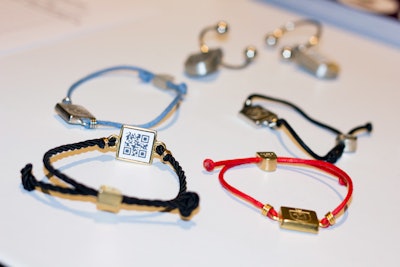
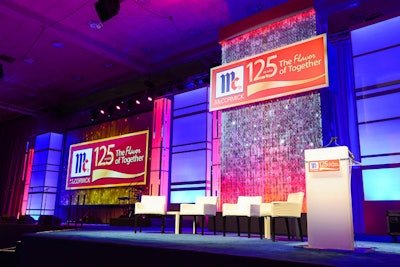

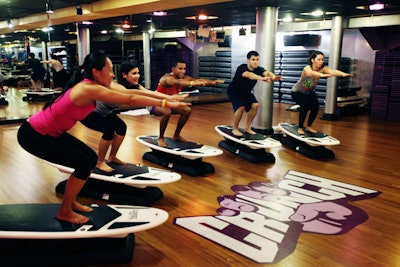
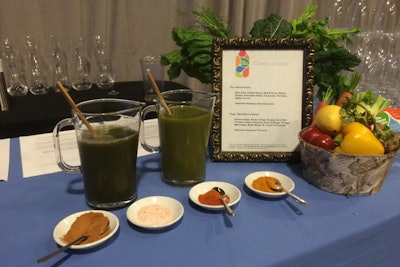
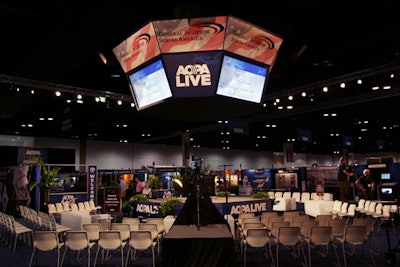
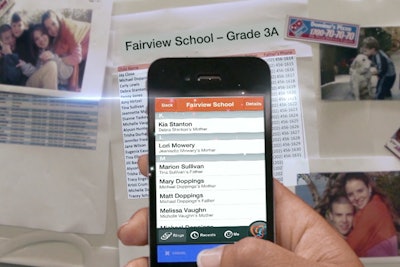
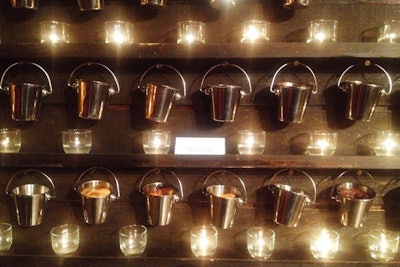
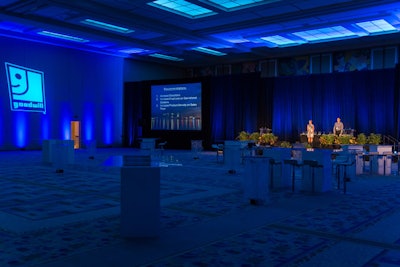
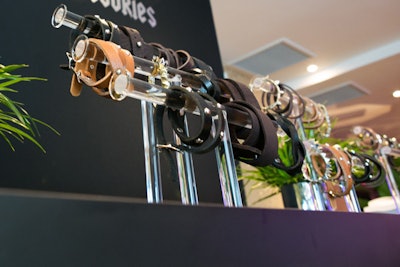
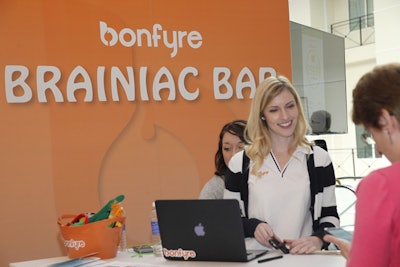
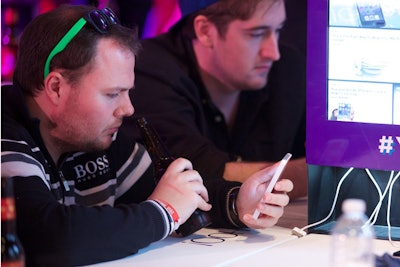
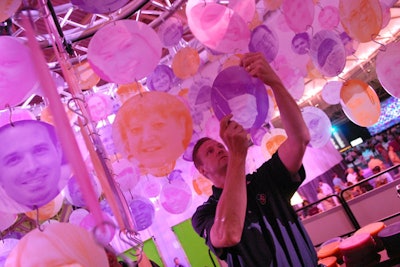

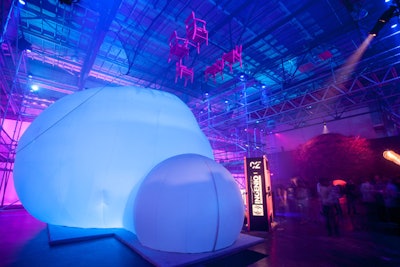
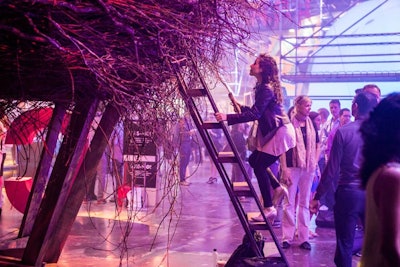
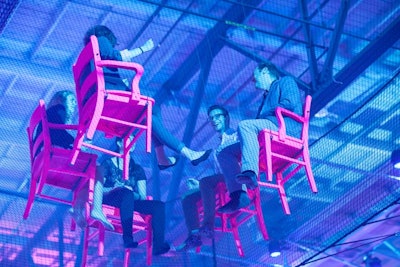
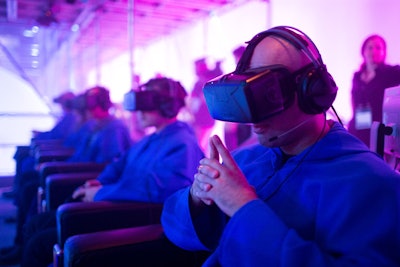
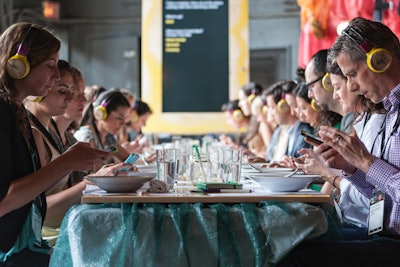
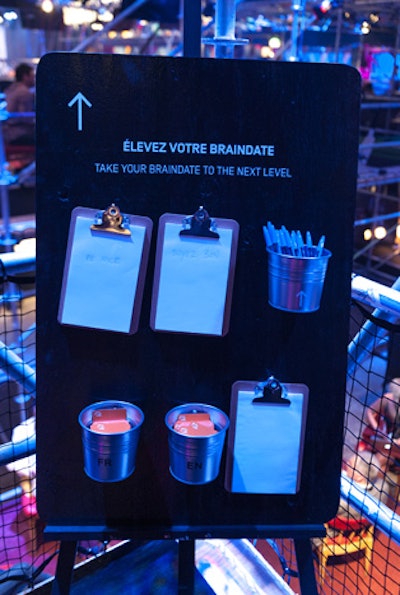

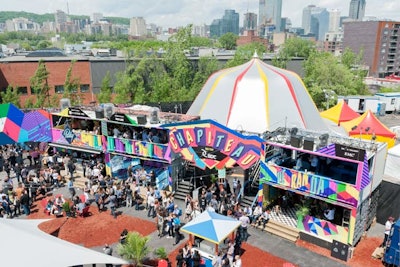
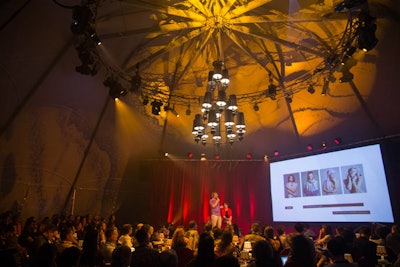
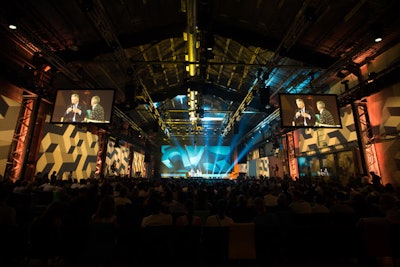
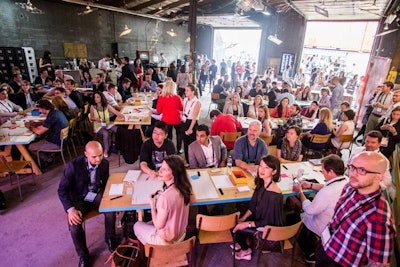
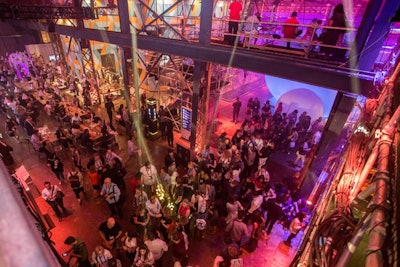
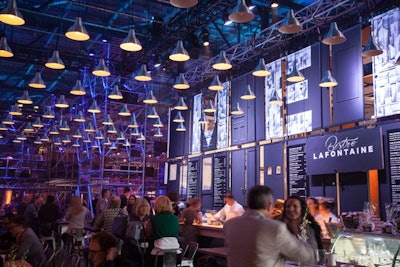
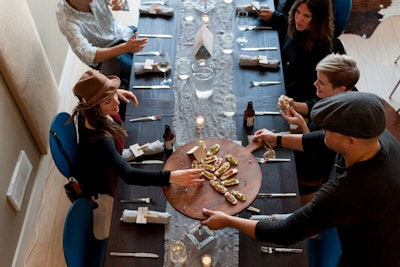
EatWith, a San Francisco-based global platform that provides alternative dining experiences with local residents and chefs, has a private-dining venue in the city. Called Test Kitchen, the space seats as many as 24 guests or holds 40 for receptions; the site can also host cooking classes.
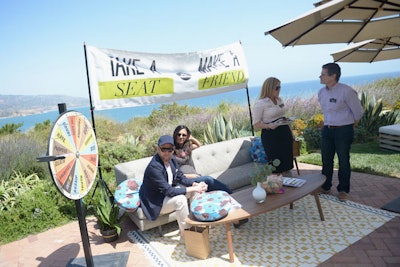
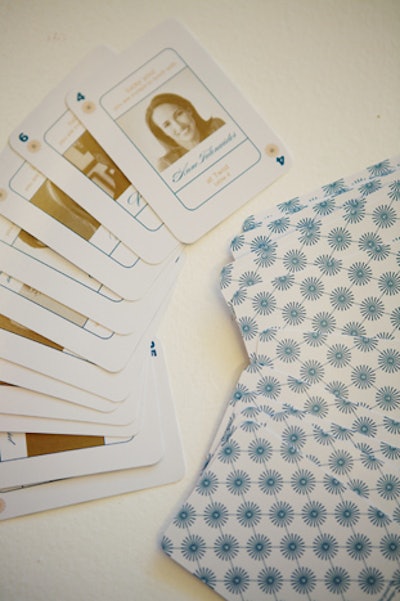
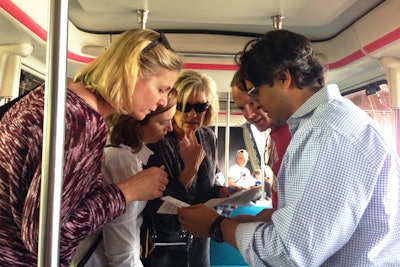
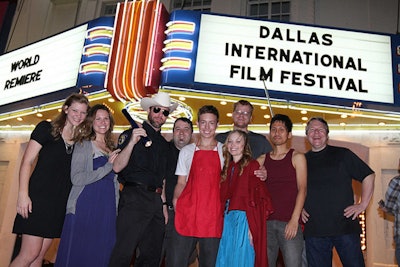
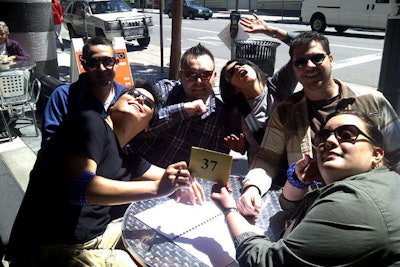
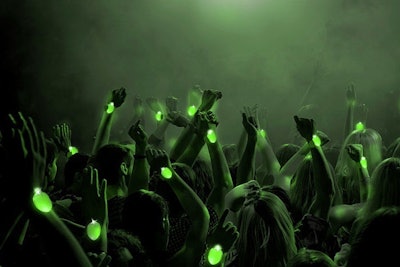
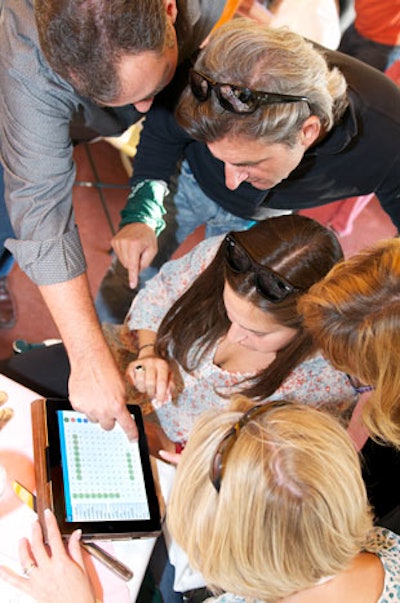
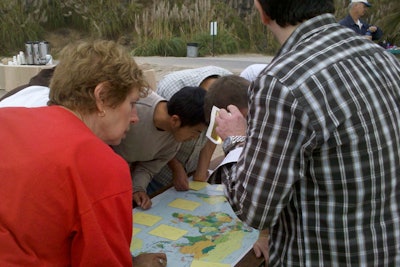
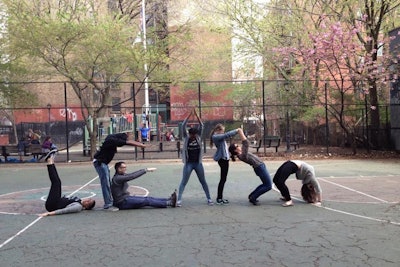
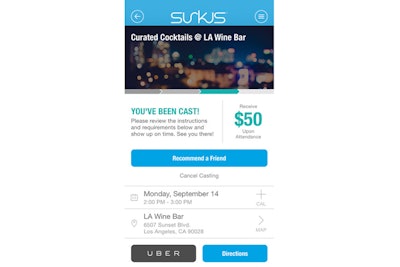
Surkus is an app to help brands, planners, and venues find the right people to attend their events, whether for product launches, brand activations, or red carpet parties. The concept is known as “crowdcasting,” and Surkus chief creative officer Jin Yu says the hope is to make the app the “Uber of curating your exact crowd.” Event hosts use the system to indicate the number and type of guests they are looking for based on interests, demographics, or social media reach. Those interested in attending events create a profile by linking their Facebook account. The system analyzes that person’s likes, friends, interactions, and hashtags and sends them notifications of upcoming events based on that data. Guests are paid a fee to attend, ranging from $5 for Playboy's recent high-profile Super Bowl party to more than $100 for less popular events. The app’s geofencing system automatically checks guests in and out of the event, which allows organizers to see if they stayed the minimum amount to receive payment. In addition to requiring guests to remain on site for a set time, hosts can also require mentions on social media, for example using a hashtag or posting a specific image. Surkus pays the guests via PayPal within 30 minutes of the completion of the event, and then a final bill is sent to the event host. After the event, Surkus sends the organizer a report with pictures of those who attended, their average time on site, and their combined social media reach. Surkus is available for iOS and Android.
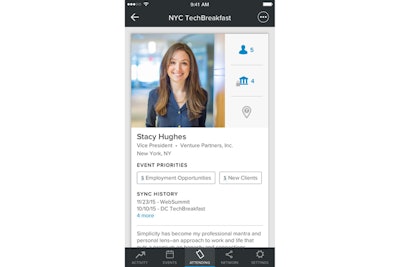
SummitSync is a new iOS and Android app focused on networking. Users log in with their LinkedIn account, select the conferences they will attend, and then anonymously swipe right (interested) or left (not interested) when profiles of other attendees appear. When a mutual connection is made, the two users can message each other in the app to schedule a meeting. Planners can configure the app to ensure that only registered attendees can use the system. They can also sell ads in the app and keep the revenue. SummitSync integrates with email, calendar tools, and customer relationship management systems. In the next few months, an update will allow organizers to add event agendas and floor plans to the app.
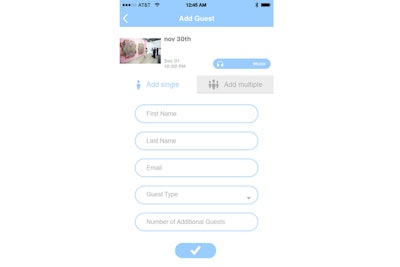
Gjests (pronounced “yasts”) is the Norwegian word for guest. The Web and mobile app launched in beta in July and will be available to everyone in March. Organizers use the Web platform to create their events by adding information such as the event name, location, time, capacity, information for a confirmation email to guests, and whether it is public or private. Hosts also upload their guest list, either manually or by linking an existing list, and then the system sends out invitations. At the event, organizers can use the Gjest mobile app to add guests, scan barcodes to check guests in, and receive notifications when the event is at capacity or when specific guests arrive (for example a V.I.P.). By March, planners will be able to create their events in the app, and the system will also add ticket sales management and the ability to be used in offline mode. Gjests is available for iOS and Android.

Konvene is an iOS and Android app for managing, promoting, and finding events. Hosts create their events in the app, adding information such as description, location, whether it is public or private, and tags such as "meeting" or "birthday party." If the event requires a ticket, the app can manage payments and check-in. Guests can use the app to find events, view the guest list, chat with other attendees, post pictures, or provide a post-event rating of their experience.
